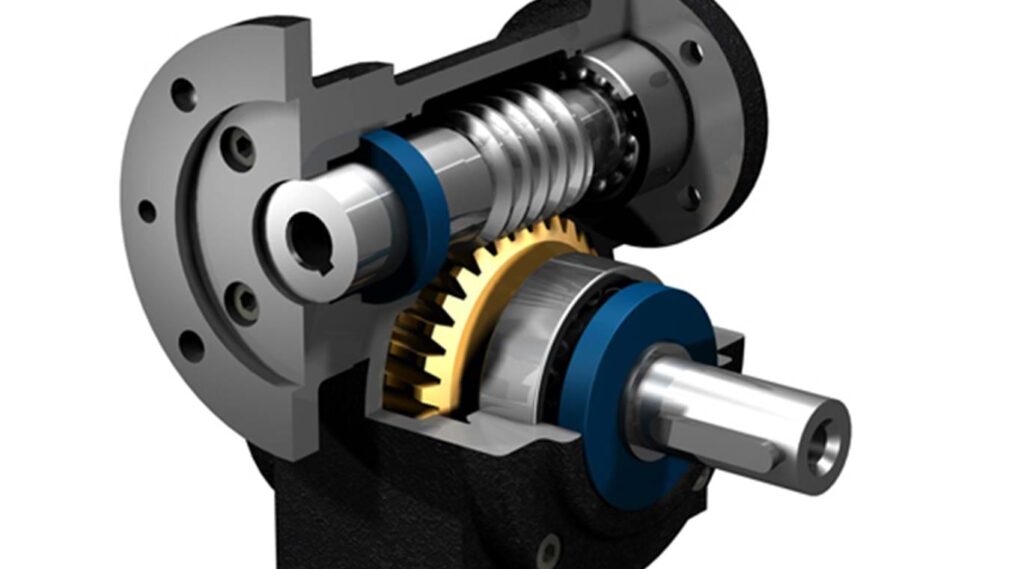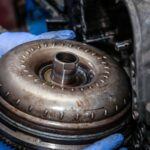What is Worm Gear?
A worm gear is gear train where one of the meshing gears is worm (a screw-like gear) and another one is a spur gear.

For power transmission, input torque is applied to the worm and it rotates and transmits the torque to the spur gear. As a result the gear rotates. The above picture is showing a single start worm gear train. It is single start as you can see a single thread wraps around the worm. Similarly, two, three and multi start worm gear trains are also possible.
Self-locking Worm Gear
A self-locking worm gear is a type of worm gear that does not allow the interchangeability of the input and output gears. As you know, in spur gear trains you can interchange the driving gear and the driven gear but the same is not possible for the self-locking type of worm gears. For this type of gear, the worm always acts as a driving gear and the spur gear as a driven gear- vice versa is not possible. If you try to run it otherwise, it will lock automatically.
As a matter of fact, most of the worm gear trains used in industry are of the self-locking type. But you can of course design a non-self- locking type of worm gear. Approximately, if the tangent of the helix angle of the worm gear is less than the coefficient of friction between the worm and the gear, then the worm gear train should be a self-locking type. A more precise governing equation to ensure the self-locking feature of the worm gear train is:
f < cos θn * tanΛ……………………Eqn.1
Where,
f – Coefficient of friction between the worm and the gear.
θn- is the pressure angle of the gear train
Λ- Helix angle of the worm.
Advantages of Self-Locking Worm Gears
○ You can achieve a large reduction ratio (as large as 200:1) from a self-locking worm gear without increasing the size of the gear box. How? A 360 degree rotation of a single start worm causes the meshing spur gear to rotate by one tooth. So, if a 10 teeth spur gear is meshed with a single start worm then you will get a reduction ratio of 10:1 straight away. Whereas, for achieving the same reduction ratio by using a spur gear train, you have to use another 100 teeth spur gear with that 10 teeth spur gear. So imagine the comparative size reduction.
○ You can think of using the self-locking worm gear for the applications where loading against the gravitational force is required.
○ You can think of using the self-locking worm gear when you have the input and output shafts perpendicular to each other.
Disadvantages of Self Locking Worm Gear
○ A huge amount of heat generation is one of the concerns for this kind of gear train. The problem however can be diluted by arranging proper heat removal provisions in the design.
○ High contact stress is another concern for this kind of gear trains. As the contact area between the worm and gear is smaller, so the amount of stress generation is more. The enveloping worm gear is one of the solutions for the problem.
Conclusion
The self-locking worm gear does not allow interchangeability between the input and output shaft and thus find many industrial applications. A large gear reduction ratio can be achieved by using the self-locking worm gear without increasing the size of the gear box.


